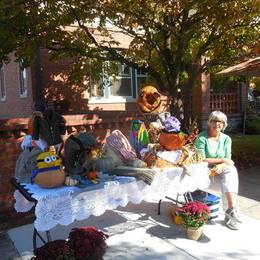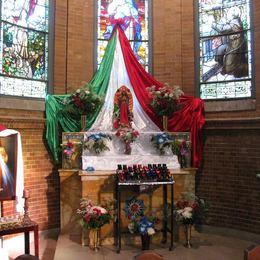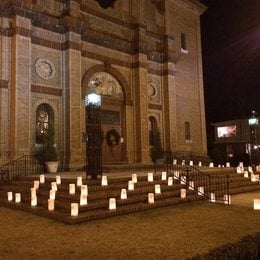Denomination: Roman Catholic
St. Mary Church and Parish has long been a fixture in Wilmington.
The parish history started at the beginning of the nineteenth century when Bishop John England (1786-1842) from Charleston made regular visits to Wilmington celebrating Mass in private homes and sometimes in Protestant churches to a small group of believers. On New Year’s Day 1845 England’s successor, Ignatius Aloysius Reynolds founded the official parish. The community flourished and Father Thomas Murphy (1806-1855) was appointed the first full-time priest in 1845. Two years later he organized construction of the Gothic Revival style Church of Saint Thomas the Apostle at 208 Dock Street.
In 1868, James Gibbons (1834-1921), took up residence as Vicar-Apostolic of North Carolina and the church was designated a Pro-cathedral. He brought the Sisters of Mercy to Wilmington in 1869. Their first convent was at the corner of 2nd and Nun Streets. He bought property on the corner of Fifth Avenue and Ann Street. A convent and school were built on the property. They were later torn down to make was for the new church.
In the 1890’s, Msgr. Christopher Dennen (1855-1939) pastor of Saint Thomas Church, encouraged the formation of a new parish. Ground was broken for the building at South Fifth Street and Ann on the twentieth of May, 1908. Abbot Leo Michael Haid (1849-1924) O.S.B., Vicar Apostolic of North Carolina, laid the corner stone. The first service was held on the seventeenth of December, 1911. Cardinal James Gibbons dedicated the building as Saint Mary Pro-Cathedral on the Twelfth of April, 1912. When the Diocese of Raleigh was created in 1924, the Pro-Cathedral was renamed the Saint Mary Church.
Mother Catherine Drexel, Mother Superior of the Blessed Sacrament Sisters in Philadelphia, gave money to but Saint Thomas the Apostle Church in 1912. A school was established nearby and Saint Thomas Church became the first church for Wilmington’s black Catholic community. In 1916, the Josephite fathers took over the church and remained there until 1966 when a fire destroyed the church causing it to close. Today, the restored structure is known as Saint Thomas Preservation Hall of the Arts.
The parish history started at the beginning of the nineteenth century when Bishop John England (1786-1842) from Charleston made regular visits to Wilmington celebrating Mass in private homes and sometimes in Protestant churches to a small group of believers. On New Year’s Day 1845 England’s successor, Ignatius Aloysius Reynolds founded the official parish. The community flourished and Father Thomas Murphy (1806-1855) was appointed the first full-time priest in 1845. Two years later he organized construction of the Gothic Revival style Church of Saint Thomas the Apostle at 208 Dock Street.
In 1868, James Gibbons (1834-1921), took up residence as Vicar-Apostolic of North Carolina and the church was designated a Pro-cathedral. He brought the Sisters of Mercy to Wilmington in 1869. Their first convent was at the corner of 2nd and Nun Streets. He bought property on the corner of Fifth Avenue and Ann Street. A convent and school were built on the property. They were later torn down to make was for the new church.
In the 1890’s, Msgr. Christopher Dennen (1855-1939) pastor of Saint Thomas Church, encouraged the formation of a new parish. Ground was broken for the building at South Fifth Street and Ann on the twentieth of May, 1908. Abbot Leo Michael Haid (1849-1924) O.S.B., Vicar Apostolic of North Carolina, laid the corner stone. The first service was held on the seventeenth of December, 1911. Cardinal James Gibbons dedicated the building as Saint Mary Pro-Cathedral on the Twelfth of April, 1912. When the Diocese of Raleigh was created in 1924, the Pro-Cathedral was renamed the Saint Mary Church.
Mother Catherine Drexel, Mother Superior of the Blessed Sacrament Sisters in Philadelphia, gave money to but Saint Thomas the Apostle Church in 1912. A school was established nearby and Saint Thomas Church became the first church for Wilmington’s black Catholic community. In 1916, the Josephite fathers took over the church and remained there until 1966 when a fire destroyed the church causing it to close. Today, the restored structure is known as Saint Thomas Preservation Hall of the Arts.









